
Today, all Rolex movements are produced at the company’s large, highly impressive facility in the outskirts of Bienne. Over one hundred years ago, the very first movements used for Rolex watches were also produced in Bienne, on the other side of the town. Not only that, back then, the full, finished watches were assembled there too.
While today, you can’t miss the movement production site that hosts over 3,000 employees, identifying the specific building where it all started is not quite as easy. Despite living in Bienne, and my personal interest in the brand, I must admit that I could not have said which one exactly it was until I made a point of finding out.
Bienne lives in its present day, which includes, but is not limited to watchmaking. It’s quite different from some other well-known watch cities made to feel more like a museum. Here, despite some clocks scattered around from the most famous local brands, unveiling the history often requires proactive investigation. That, I find, adds to the charm, which I will try to make more accessible via this blog, hopefully without ruining it!
Beyond Bienne’s overall low key approach to its watch heritage, the main reason it is not that easy to pinpoint the specific place where Rolex watches were first made is intrinsically linked to the complex nature of the Rolex corporate structure from the very beginning, and up until only a few years ago. Rolex only acquired the company that makes its movements in 2004. Up until then, Rolex SA, the company we know today, and Manufacture des Montres Rolex SA, its Bienne-based movement manufacturer, were separate entities, with different owners. In reality, with the latter having as its exclusive client the former, and operating under its name, the two were very much functioning as a unified entity. The 2004 fusion was nonetheless highly strategic for Rolex, putting an end to over a century of the deep yet uncommon relationship with its production facility established in 1878 in Bienne by Jean Aegler.
The Workshop on the Hill
The highly talented watchmaker Jean Aegler founded with his wife a company in his name in Bienne, in 1878. Three years later, in 1881, Aegler acquired a workshop in the hills overlooking the city, in the neighbourhood known as Vignoble, which in French means vines. Up until today, there are vines growing on that very same Jura hill. The workshop, as we will see in more detail below, is where the first ever Rolex watches were made. The building is still around, and while put to a very different use, has kept most of its original architecture as well as outdoor signage reminiscent of the Rolex era. The advertisement below shows what the building looked like, but it’s only combining it with a later image, further down, that it can be easily located.
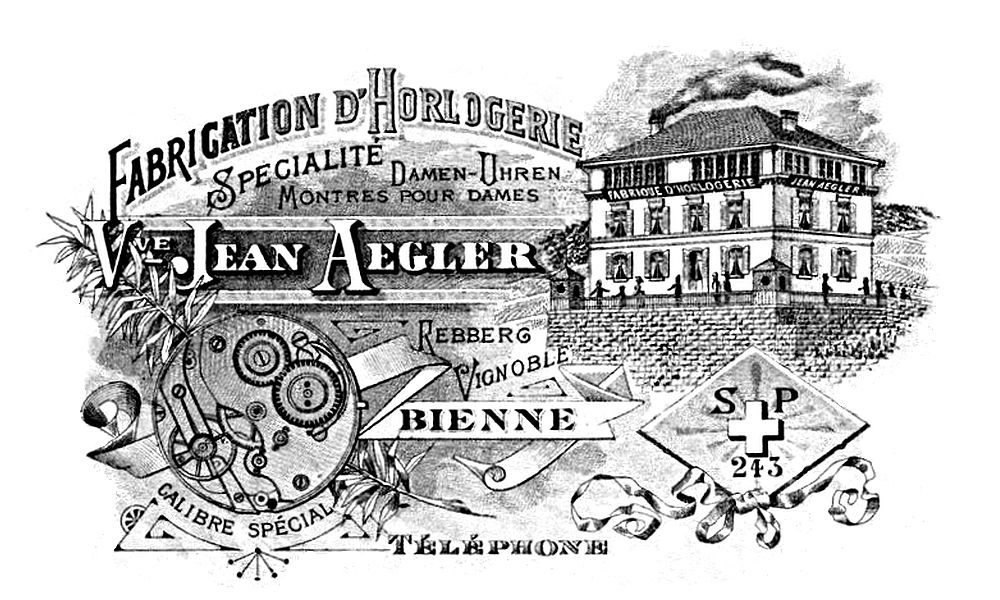
A late 19th century Aegler advertisement
Jean Aegler was different from most other movement producers back then for two reasons. First of all, by the high quality of its movements, which used lever escapements, a more robust and precise technology than the more common cylinder escapements found in less expensive watches. But also, Aegler specialised in women’s watch movements, as the above advertisement shows (“Montres pour Dames” in French, “Damen-Uhren” in German). Back in those days, men’s watches were typically large pocket watches. Women, on the other hand, would either carry small pocket watches, or wear them on the wrist or pinned to their clothing. Women’s watches were therefore smaller, meaning their movements had to be as well. The reduced size made them more complex to produce. The combination of both high quality and small size characteristic of Aegler movements caught the attention of a very ambitious, and visionary, young man, whose name will inevitably resonate with most watch lovers: Hans Wilsdorf.
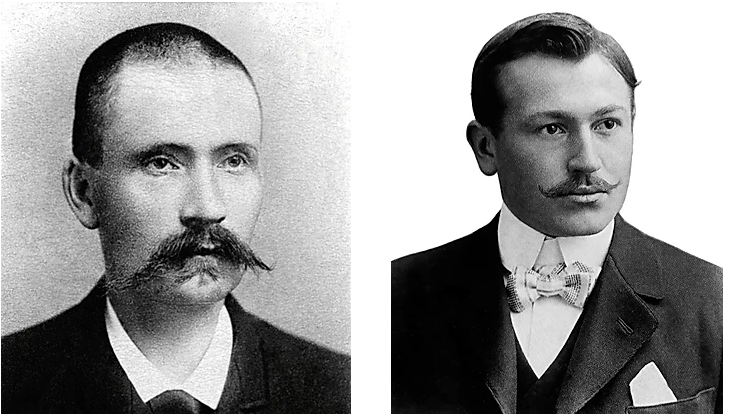
Jean Aegler, left, and Hans Wilsdorf
Hans Wilsdorf was a fantastic watch industry leader to say the least. While the first men’s wristwatch is to the credit of Cartier with the Santos in 1904, Wilsdorf was among the pioneers who were convinced that men’s wristwatches would take off. The German-born businessman had started to work in the Swiss watch industry before setting up Wilsdorf & Davis, a London-based watch trade, with his brother in law. It was originally a fairly straightforward trade, ordering watches to be produced in Switzerland and importing them into England, and there selling them onto jewellers. While his offering included different tiers of products, Wilsdorf wanted a very high quality supplier capable of producing top-of-the line men’s wristwatches. Aegler was exactly what he needed.
Jean Aegler himself died at the young age of 41, in 1891. His wife took over the business, as is shown in the illustration further above: “Vve” is the abbreviation for “Veuve”, meaning “widow” in French. Her son Hermann is known to be the one who developed a close relationship with Wilsdorf, laying the foundations for the inseparable ties between the two companies over the years.
The First Rolex Watches
While Aegler was specialised in movements, it is widely accepted that he produced fully finished watches for Wilsdorf, assembling the dials and cases provided by other Swiss suppliers. Wildorf insisted that the best-in-class watches purchased from Aegler bear the name Rolex on the dial, a name he had registered in 1908. This was apparently the subject of some fierce debate with Hermann Aegler, who thought the Aegler name should rather appear given that they produced the entire pieces. Wilsdorf’s point of view prevailed, and we will never know if the brand would have had the same success with “Aegler” written under the crown.
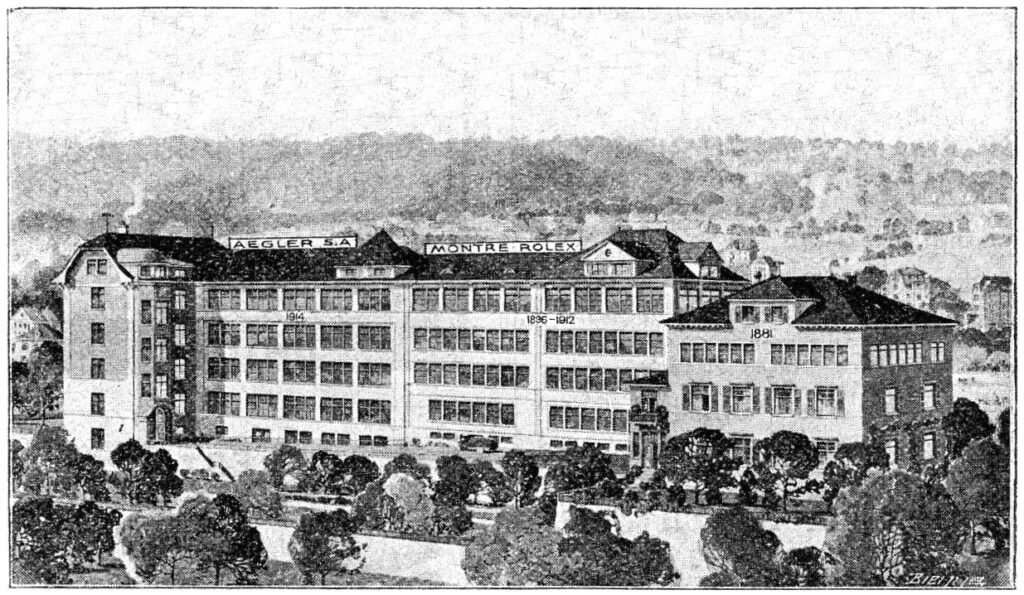
The drawing above is really what gives the location away. The expansion, with the key dates, makes the group of buildings extremely easy to locate today, unlike the original workshop alone, which looks like so many other houses in Bienne. Further below, I will explain what the site is being used for today, and show some recent photos. One thing we can already note is that while no longer a Rolex or even a watchmaking site, the set of buildings still bear the Rolex name, and operate under a single entity. There is even an indoor bridge connecting the original one to the expansion.
There is an open question as to which units exactly were running when the first watches carrying the Rolex label were produced. While the original building, on the right, was definitely central, it could also be that the second block, effectively the middle one on the image above, was also part of the production site by then. The date above “1896-1912” does not give a clear indication as to when it was put into use. One can assume it was gradual, over time, during that period. David Gaffino’s excellent book on the history of Bienne indicates that the new building was inaugurated in 1897. Therefore, and assuming that Rolex watches were already in production at the latest in 1910, as discussed in the next paragraph, it could well be that the second block is also part of “where the first Rolex watches were made”.
As mentioned above, there is unfortunately no information based on publicly available archives as to what exactly was the model or reference, or its exact year. That being said, the meaningful starting point for Rolex watches is generally considered to be what Wilsdorf mentions in his Rolex Jubilee Vade Mecum as being the first ever Rolex wrist-watch chronometer, in 1910. There is some lack of clarity on that front though, given that the only publicly documented traces left are that an 11-line Rebberg movement with lever escapement won a First Class Chronometer Certificate from the Bienne rating office. “Rebberg”, in reference to the hilly neighborhood where the Aegler workshop was located, was used as a trademark by Aegler for the production of their movements and also some complete watches.
Two Entities, One Crown
The relationship between the two continued to grow interdependently. Aegler would produce watches for others, but Rolex was its most important customer. Wilsdorf set up an office in Bienne in 1916, before incorporating Rolex SA in Geneva three years later, as a reaction to new import duties in England as a consequence of the War. By that time, the Aegler factory had considerably grown, as we saw on the image above where the initial 1881 building is dwarfed by the large blocks added over the years. From a branding perspective, while the two entities remained distinct, the close relationship was reflected in Aegler being listed as of 1916 as ““Les fils de Jean Aegler, Fabrique de montres Rebberg, Final & Rolex”. The legal and trading names for Aegler continued to evolve periodically, but always reflected the intrinsic ties to Rolex.
In the 1920s, in the face of the recession caused by the war, the two companies, keen to mutually reinforce themselves, each purchased shares in one another. While the shares were eventually purchased back on both sides in the 1930s, the two agreed in 1936 to an exclusive arrangement, with Aegler only supplying to Rolex. The Bienne company was renamed “Manufacture des Montres Rolex SA.” It continued to be managed by the same family, with Emile Borer, Hermann Aegler’s nephew, taking over in 1931 before his son Harry succeeded him in 1969. The movement production sites continued to multiply across the city, until everything was centralised as of 1969, west of the city center, in the Boujean neighborhood, where the Rolex movement production site has since stayed and continued to expand into the highly impressive facility we know today.
In 2004 finally happened what many assumed had always been the case: Harry Borer sold Manufacture des Montres Rolex SA to the Geneva mothership, Rolex SA. The two interdependent entities were officially housed under the same corporate roof. Now hosting 3,000 employees, the Bienne production site remains the one where all Rolex movements are produced before being sent to Geneva for final assembly. When one knows the highly deserved reputation of Rolex movements for their precision and reliability, it is obvious how important a role Bienne continues to play in the present and future of the brand with the crown.
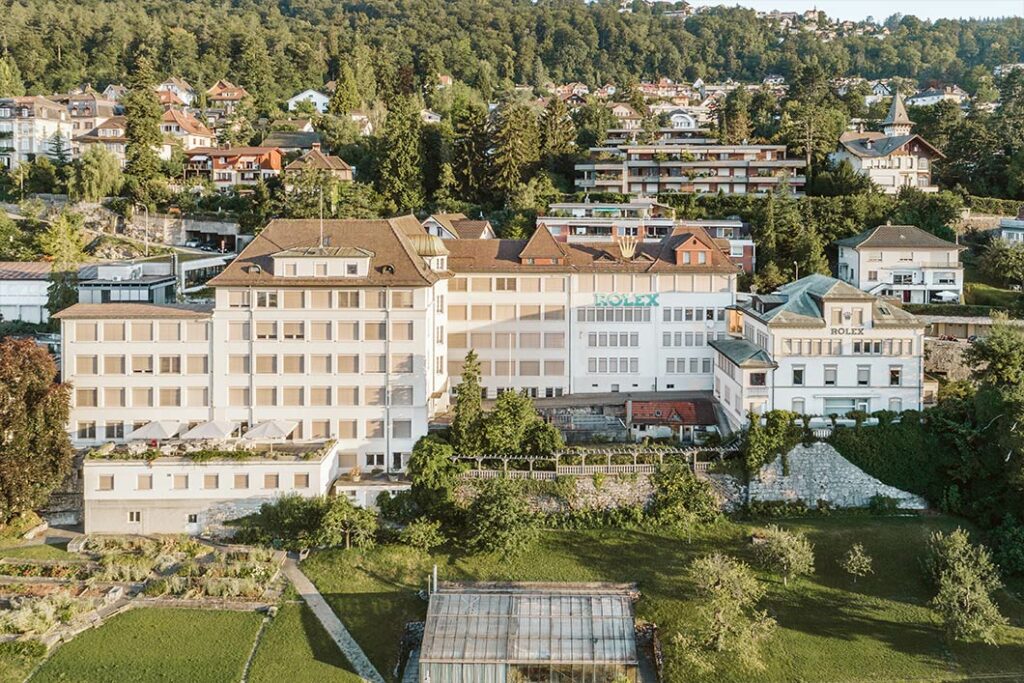
The former Aegler site today, with the original building on the right
The Original Site Today
If you have read this far, you are probably wondering: what has happened today to the original 1881 building, where it all started? This is one of my favourite things about the whole story. Not only has the building been preserved, as it historically should, with the external Rolex signage and mostly original architecture, but it is being put to great use, hosting the Bern University of Applied Science’s Technical and Computing departments. That means the spirit of innovation, of complex problem-solving, of constant improvement-seeking so characteristic of Rolex since Jean Aegler opened his workshop almost 140 years ago, continues to inspire and to live through the minds of tomorrow’s Swiss inventors. While no official tour or other Rolex-related activity is available at the site, its outdoor sections can be freely accessed by watch lovers in the know, such as yourself.
Below are some photos my son and I went out to to take to help illustrate this story.
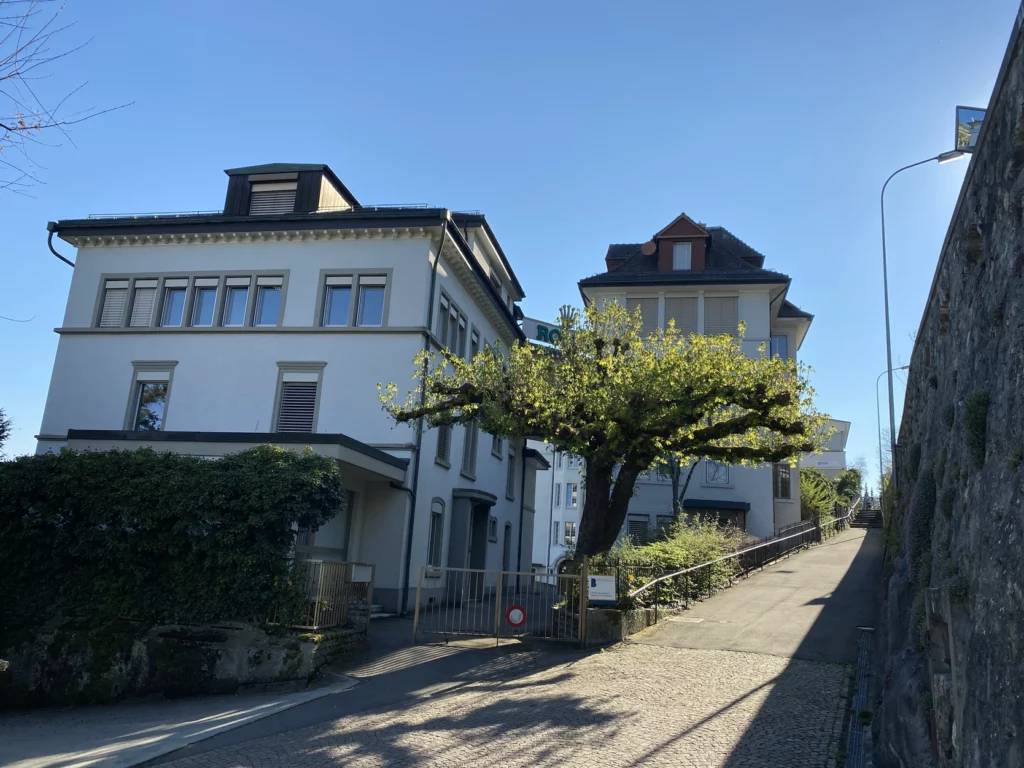
The original building, on the left
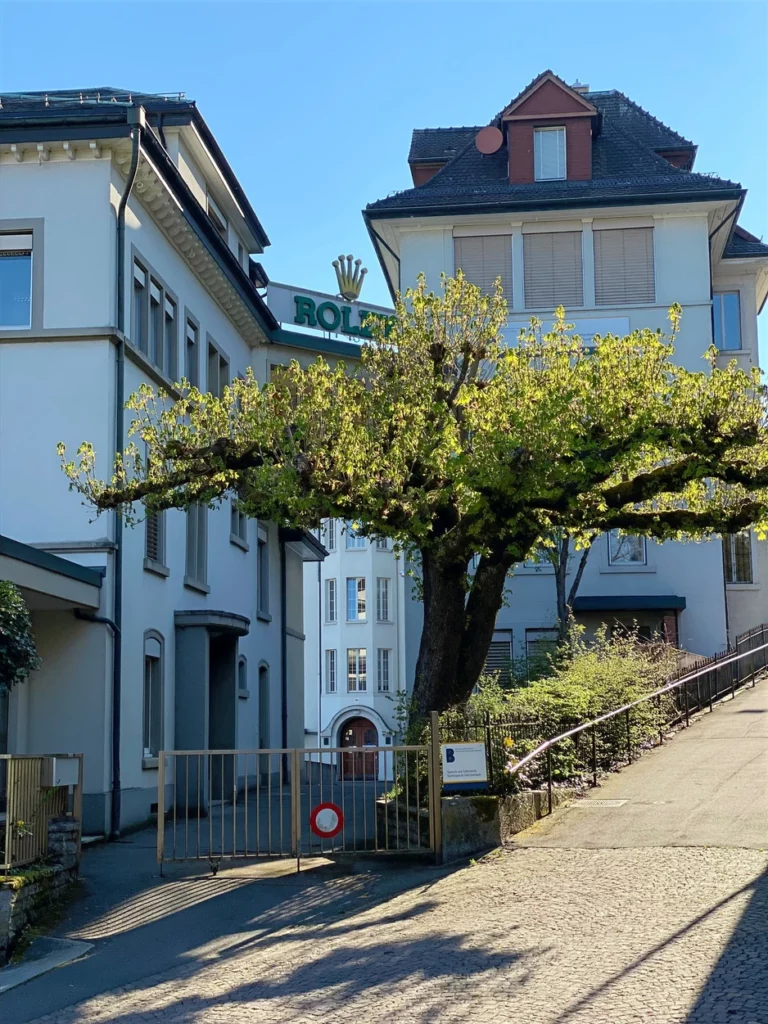
The building entrance, with the university signage on the right. Anyone can enter the outdoor sections.
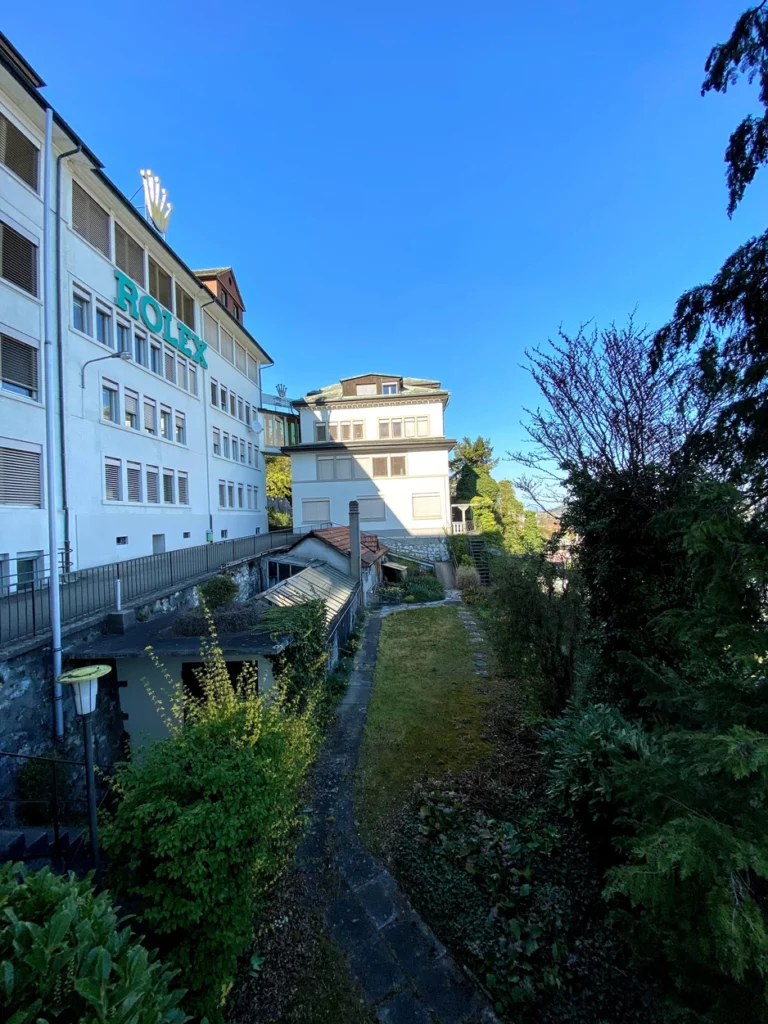
Once inside the gate, the original building in the centre, and the extension on the left
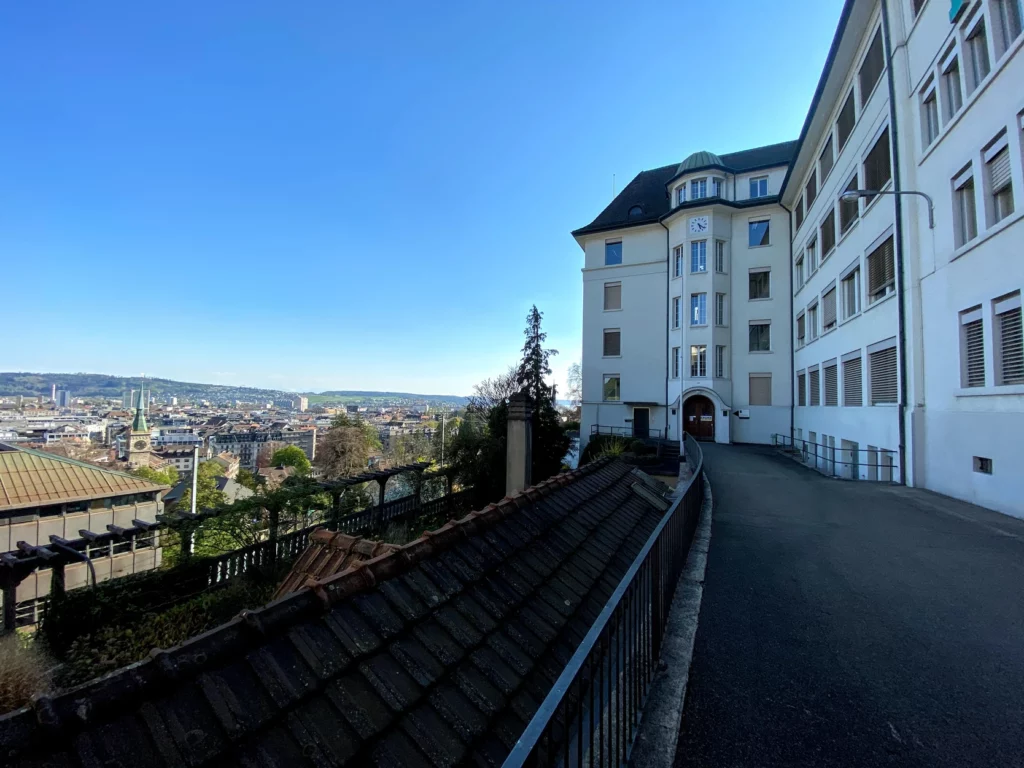
A view on Bienne, with the building extension on the right
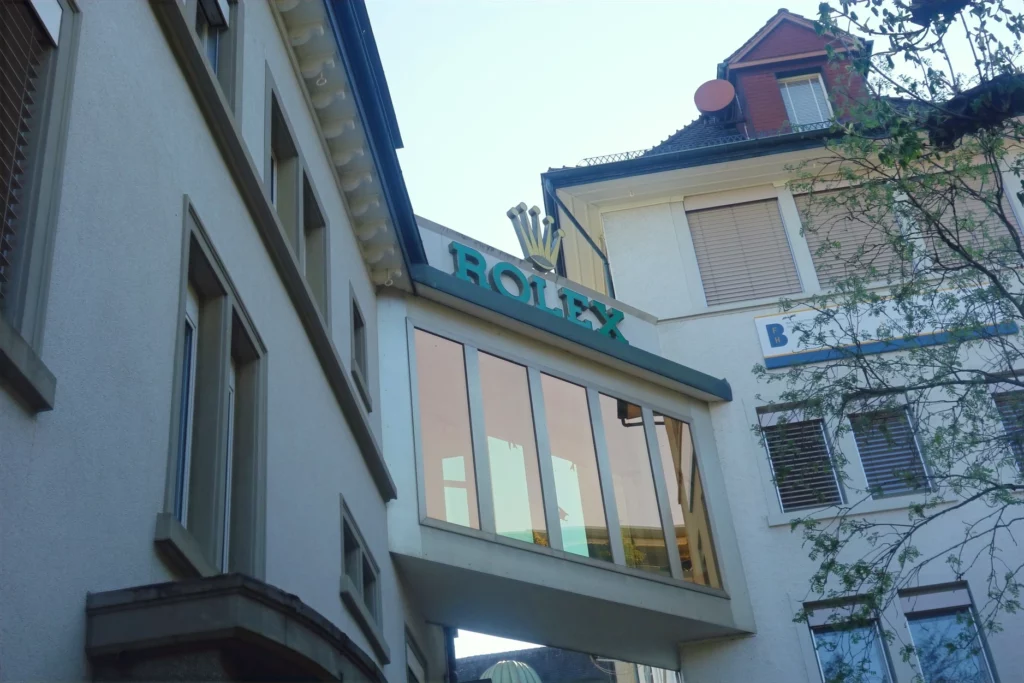
The bridge connecting the original building on the left to the subsequent ones

Right opposite, a beautiful building where Rolex movements were lated produced, now converted to apartments
Visiting
Located at Haute-Route, 80, the building is about a 15 min walk or a 5 min bus ride from main train station. The front of the original building cannot be accessed, but the outdoor space between the original building and the subsequent ones can, through the gate showed on the third photo above. It seems to be open at all times. Walking around gives a good sense of the architecture, and offers a great view on Bienne, its lake and, if the weather is nice, the Alps in the background.
The limited “touring” means I would not suggest going out to Bienne just for that. But if you do go to Bienne for a day or more of watch immersion, and you love Rolex, then I recommend it. It is also definitely worth checking out the beautiful building which later also served to produce Rolex movements, located on the other side of the street, at Haute-Route 85. It has now been converted into an apartment building. The overall area is lovely, and a good departing point for a stroll around the old town, just below.
References
Finally, I would like to call out and thank the wonderful sources I used to collate the different facts used in this post, and encourage you to read them, in particular the first one listed, if you are interested in more historical and technical detail around Aegler movements and its history with Rolex:



Surprising it’s almost a secret but great to know
I hope I can come visit one day 🤞